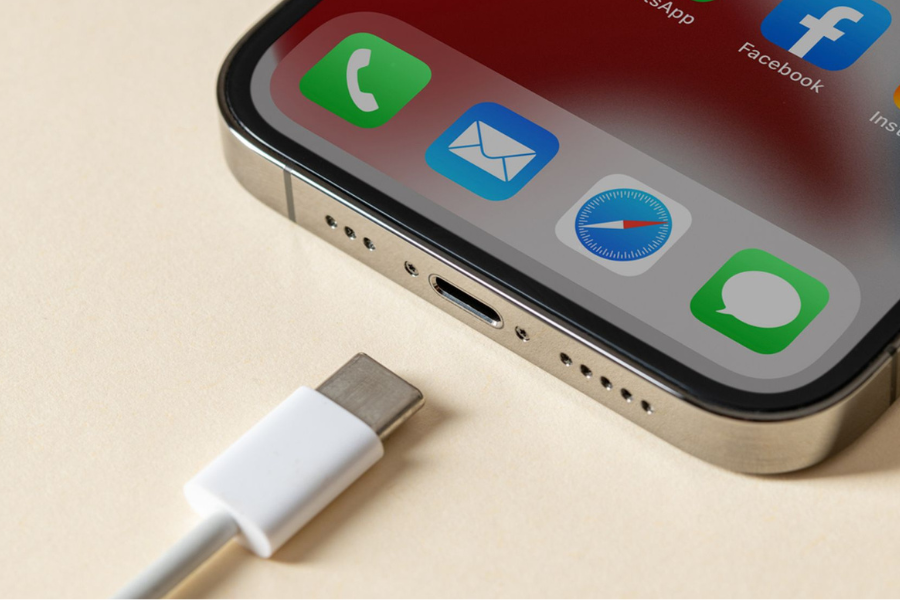Which USB-C cables can be used for display?
For your display, go for USB-C cables that follow the DisplayPort over USB-C standard. These cables handle both data and video signals in one shot to make your life easier. And if you're aiming for the best performance, consider checking out the offerings from VVITEC, known for their cutting-edge solutions. You should also look out for a few things, like checking the cable's version. Either it's USB 3.1 Gen 1, USB 3.1 Gen 2, or USB4. The latest versions mean better speed and overall performance. You also need to consider your personal display needs. Does it crave standard definition (SD), high definition (HD), or ultra-high definition (UHD or 4K)? Make sure your chosen cable can handle that.
And if you need some extra tech fun, you would love to explore options like Thunderbolt™ 3 and USB4. They bring extra powers to the table and are considered the superheroes of USB-C cables. Thunderbolt™ 3 and USB4 include support for DisplayPort over USB-C, and these are perfect for those of us who have fancier display needs.
Understanding USB-C Technology
USB-C is a cable used all over the world and is known as the universal cable. It has a reversible design, which enables users to plug in the cable without worrying about which side goes where. Beyond its physical characteristics, ocdun USB C Cable 6A supports faster data transfer speeds and higher power delivery compared to its predecessors. This makes it an excellent choice for users seeking not only versatility in design but also enhanced performance in data transfer and charging capabilities
1. USB-C's Role in Video Output:
Explore how USB-C's versatility extends to video output, providing a practical solution for display connectivity. Learn about its compatibility with the DisplayPort over USB-C standard, simplifying the transmission of both data and video signals through a single cable.
2. Selecting the Right USB-C Cable for Display:
Navigate the intricacies of choosing a USB-C cable tailored for display connectivity. Explore all the versions available, from USB 3.1 Gen 1 to USB 3.1 Gen 2 and USB4, to understand how each version is different from the other. It will help you know how each version affects data transfer speed and the overall performance. Consider reputable brands like ocdun - USB Cable for display needs, ensuring not only compatibility but also reliability in delivering high-quality performance.
3. Understanding USB-C Cable Specifications:
It is really important to examine USB-C cable specifications when you aim for optimal display compatibility. Delve into the details of versions like USB 3.1 Gen 1, USB 3.1 Gen 2, and USB4, ensuring that the selected cable aligns with your display's specific requirements.
4. Video Resolutions and USB-C Cables:
Explore the diverse landscape of video resolutions supported by USB-C cables, ranging from standard definition (SD) to high definition (HD) and ultra-high definition (UHD or 4K). Understand how these resolutions affect the display compatibility and personalise your cable choice accordingly.
5. Thunderbolt™ 3 and USB4:
For those who demand an extra layer of sophistication, delving into the world of Thunderbolt™ 3 and USB4 reveals a world of enhanced capabilities. These technologies redefine the landscape of connectivity. One of the prime attractions of Thunderbolt™ 3 and USB4 lies in their ability to deliver unrivalled data transfer speeds. A standout feature of Thunderbolt™ 3 and USB4 is the ability to daisy chain multiple devices. It simplifies cable management and optimises desk space. It also offers users unmatched convenience in setting up and expanding their workstations.
Conclusion
The answer to the question "Which USB-C cables can be used for display?" lies in understanding the specifications and abilities of the cables you're looking into. USB-C, with its versatility and compatibility with DisplayPort, provides a seamless solution for connecting displays. In an age of advanced technology, with one port becoming two and users' demands increasingly changing, USB-C combined with Thunderbolt™ 3 and USB4 provides a forward-looking solution that is future-proof. If you also want to learn about the fastest USB to lightning cables, continue exploring the cutting-edge options available.
FAQs
Can any USB-C cable be used for display connectivity?
Not all USB-C cables are created equal. To ensure display compatibility, choose a cable that supports DisplayPort over USB-C and meets the required specifications for your display's resolution.
Are Thunderbolt™ 3 and USB4 necessary for display connectivity?
While not mandatory, Thunderbolt™ 3 and USB4 offer additional benefits such as higher data transfer speeds and power delivery. If your display requires these features, opting for Thunderbolt™ 3 or USB4 can be advantageous.
What if my USB-C cable doesn't support the required display resolution?
If your current USB-C cable doesn't meet the display resolution requirements, consider upgrading to a cable with higher specifications. Check the cable's version and capabilities to ensure it meets your display's needs.

